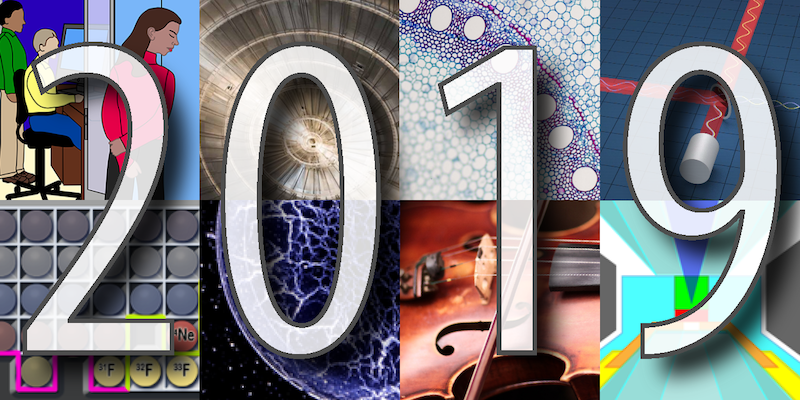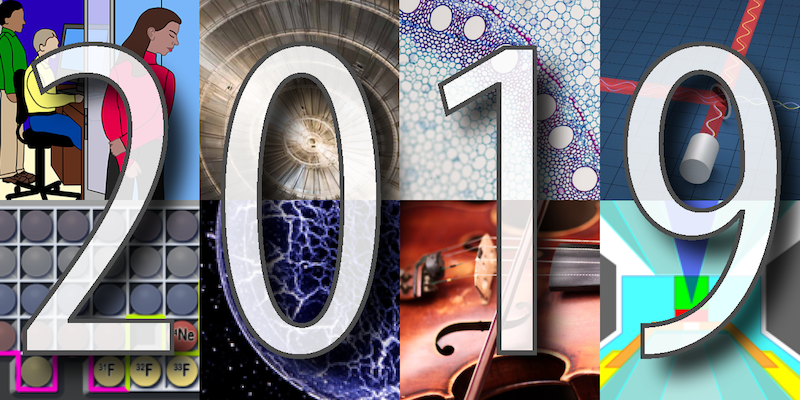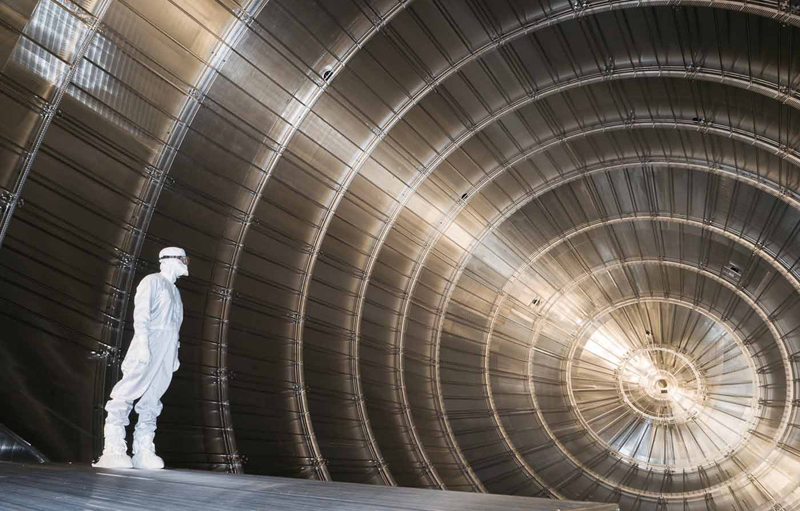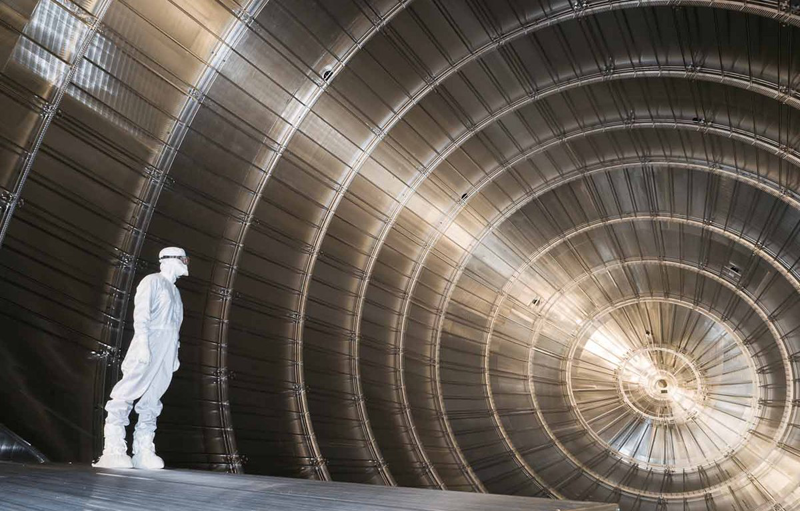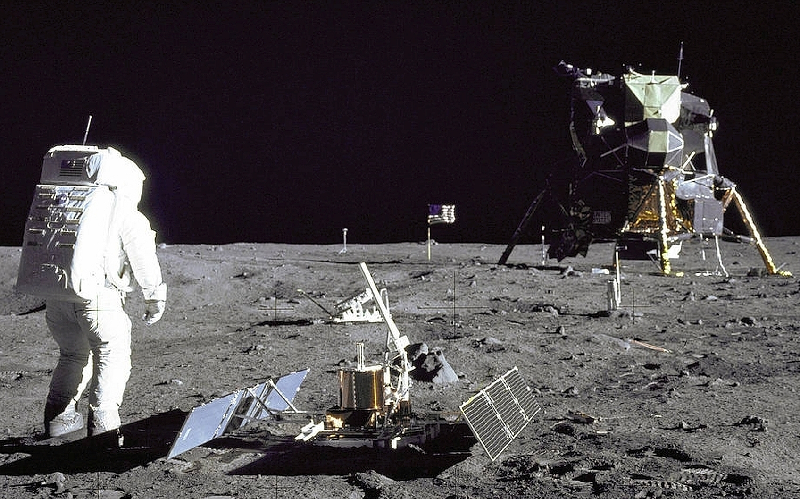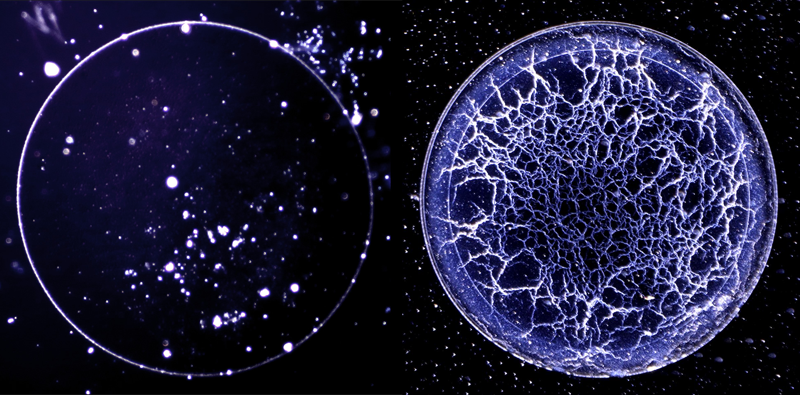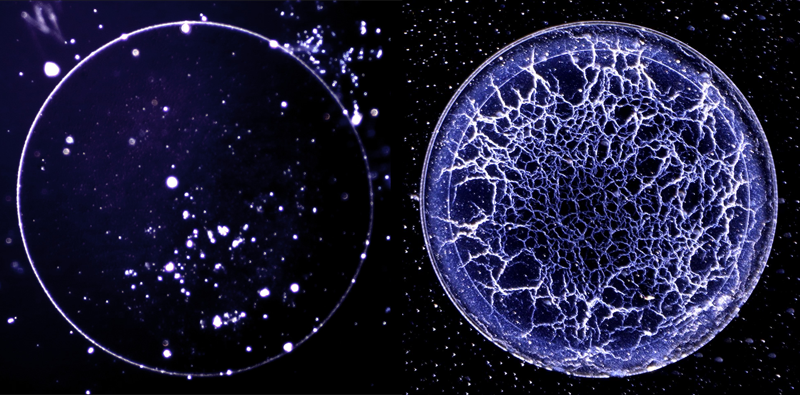Highlights of the Year
It’s that time when we say farewell to 2019 with a selection of stories that encapsulate the year. As always, we include not only the milestones and big discoveries but also those results that grabbed attention simply because they were curious or fun.
Another “highlight” for us this year is that we welcomed several new sections. We launched a series called Postcards, which looks at how history, culture, and current events are shaping physics research in a variety of countries. The first two focused on Vietnam and Argentina. We’ve also begun inviting Opinion pieces on issues that touch on all aspects of physics. And to complement our regular news features, we’ve reintroduced Trend articles, in which experts describe where a developing field is headed.
Wishing everyone a sensational 2020.
–The Editors
Mercury Rising for Superconductors
below freezing would be a dreadful weather forecast, but it was good news for the field of superconductors. At that freezing temperature (260 K), two groups—one based in the US and the other in Germany—detected superconductivity in a hydrogen-rich material called lanthanum hydride (see Viewpoint: Pushing Towards Room-Temperature Superconductivity). This result smashed the previous record held by hydrogen sulfide, whose superconducting transition temperature is (203 K). The long-standing dream of room-temperature superconductors seems within reach, as theorists have more recently predicted that other hydrides might superconduct at temperatures as high as (see Viewpoint: A Prediction for “Hot” Superconductivity). The one downside, however, is that all of these hydrogen-rich materials only superconduct at extremely high pressures, comparable to those found in Earth’s core.
Quantum Boost for Gravitational-Wave Detection
The gravitational-wave observatories LIGO and Virgo boosted their detection sensitivity by upgrading their hardware to make use of a quantum effect (see Focus: Squeezing More from Gravitational-Wave Detectors). In these giant laser interferometers, the fluctuations in photon arrival times at the detectors limit the sensitivity of the system. The observatories have now reduced this form of noise with quantum “squeezing”—a technique proposed 40 years ago. The improvement should allow fainter signals from more distant objects to be detected. As a bonus, the upgrade should also improve the systems’ abilities to pinpoint the location in the sky of gravitational-wave sources. The LIGO and Virgo teams now expect up to 50% more events to be detected per year.
Neutrinos Shed Some Weight
Neutrinos are the most abundant massive particles in the Universe, but their mass is still unknown. The Karlsruhe Tritium Neutrino (KATRIN) experiment in Germany placed an upper limit on the mass of neutrinos—1.1 eV, cutting in half the previous best limit derived from direct mass measurements (see Viewpoint: Homing in on the Neutrino Mass). To estimate the neutrino mass, the collaboration monitored the radioactive decay of tritium into helium-3 nuclei, electrons, and antineutrinos. Based on the energies of the emitted electrons, the researchers estimated the antineutrino mass. With five more years of measurements, KATRIN will achieve another fivefold improvement in sensitivity, probing a mass range down to 0.2 eV. Knowledge of the neutrino mass will be important for cosmological models and could help solve mysteries such as why there is more matter than antimatter in the Universe.
The Dripline Gets an Extension
This year saw researchers extend the neutron “dripline” for the first time in 20 years (see Viewpoint: Reaching the Limits of Nuclear Existence). The dripline defines the boundary between stable and unstable isotopes of a given element. Knowing this boundary allows researchers to refine theories that could enable a better understanding of the limits of nuclear stability. Previously, the dripline had been mapped for the eight lightest elements; the additional measurements for fluorine and neon take this number to ten. In her commentary, Artemis Spyrou (see Q&A: Studying the Stars—No Telescope Required) notes her hope that physicists won’t have to wait another two decades for the next dripline discovery. Measurements at next-generation rare-isotope facilities, planned to start running in two years, could extend the dripline to magnesium, the 12th element in the periodic table.
The Hunt for a “Theory of Life”
Physicists love theories that boil down complex phenomena to a small set of predictive equations. One of our most read stories this year highlighted the search for a “theory for life” that could explain why life can exist and how it behaves (see News Feature: Life is Physics). One route to reach this goal is describing life’s ingredients (like replication and genetic evolution) as emergent phenomena that arise from the interactions among a large number of simpler components. Emergent phenomena occur in many lifeless condensed-matter systems. But applying techniques developed for these inanimate systems to animate ones is tricky, and physicists may need to develop a whole new set of tools if they are to develop a theory of life. For now, they are working at understanding one biological system at a time, with the idea of finding patterns that will point toward a comprehensive description.
Sexual Harassment Rife among Undergraduate Women
Most Physics articles focus on what researchers observe. But an important study instead looked at what many physicists experience. A survey of around 500 undergraduate women studying physics in the US found that three-quarters had personally faced some form of sexual harassment “in the context of physics,” such as in a physics lab or classroom or at a physics department event. Moreover, these experiences correlated with feeling alienated from the field. Julie Libarkin writes that this study and others like it are a “wake-up call to all members of our community to advocate for change.” (See Viewpoint: Yes, Sexual Harassment Still Drives Women Out of Physics.)
50 Years of Physics from the Moon
50 years ago, astronauts walked on the Moon for the first time, but they also initiated a new era in scientific research by setting up moon-based instruments (see News Feature: Physics from the Moon). Lunar reflectors have allowed researchers to bounce laser beams off the Moon and determine its distance from Earth with a precision of a few millimeters, leading to some of the highest-precision tests of the general theory of relativity and of Newton’s law of gravitation. A new reflector that may be installed in the next few years should improve the precision to less than 1 mm, small enough to test proposed alternative theories to general relativity. Astrophysics may also be coming to the Moon—researchers propose building a radio receiver array on the radio-quiet, far side of the Moon to study the “dark ages” of the Universe, the era before the first stars were born.
Signs of Supersolidity in Dipolar Gases
Few materials are as mindbending as a supersolid, which might explain why physicists have spent decades hunting for it in the lab. In the supersolid phase, atoms produce a density modulation—like the periodic arrangement of atoms in a solid—but they also flow without friction—like in a superfluid. This year three groups reported evidence for this counterintuitive combination in a Bose-Einstein condensate of atoms with very large magnetic moments). This “dipolar BEC” is a natural superfluid. But under the right conditions, the superfluidity endures while the atoms self-organized into an array of dense droplets, providing the signature density modulation. Supersolidity had previously been spotted in BECs held in an optical lattice and manipulated by light fields. But supersolidity in a dipolar gas is interesting because it’s driven “organically” by the atoms’ interactions, rather than by external fields (see Viewpoint: Dipolar Gases Go Supersolid and Synopsis: Spectral Evidence of a Supersolid Made of Cold Atoms).
The Weight of Sound
Giving new meaning to the expression “weigh your words,” theorists have shown that acoustic waves—like the sounds of our voices—carry mass. At its most basic level, sound is a traveling wave of atomic displacements within a material. Unlike previous work, the researchers modeled sound propagation by including nonlinear forces that act on displaced atoms. To their surprise, they found that a sound wave transports a fraction of the material’s mass (see Focus: Sound Waves Carry Mass). The amount of sound-propagated mass—which is equal to the energy of the wave multiplied by a factor that depends on the sound speed and on the material density—is usually miniscule, but it might be measurable in certain cases. A high-energy sound wave in a Bose-Einstein condensate, for example, could weigh as much as 0.1% of the condensate’s total mass.
Physics for the Palate
Physicists weighed in on two perfect treats for a snowy winter day—whiskey and crêpes. Two researchers applied so-called optimal control theory to devise a strategy for making a perfect crêpe (see Synopsis: Making the Perfect Crêpe). Using a model that accounted for the viscosity changes during cooking and for the batter’s flow inside the pan, the duo detailed the conditions of pan inclination and wrist movements that would lead to an even crêpe without lumps. Another group in Kentucky—the epicenter of whiskey making in the US—discovered a characteristic behavior of American whiskey that could help in spotting illegal counterfeits and in investigating fast-aging alternatives (see Synopsis: Telling Whiskey from Whisky). The researchers found that the evaporation of diluted American whiskeys leaves characteristic web-like patterns that aren’t observed for Scotch whisky and other distillates. These patterns could serve as unique, reproducible “fingerprints” of each whiskey’s type and age.



